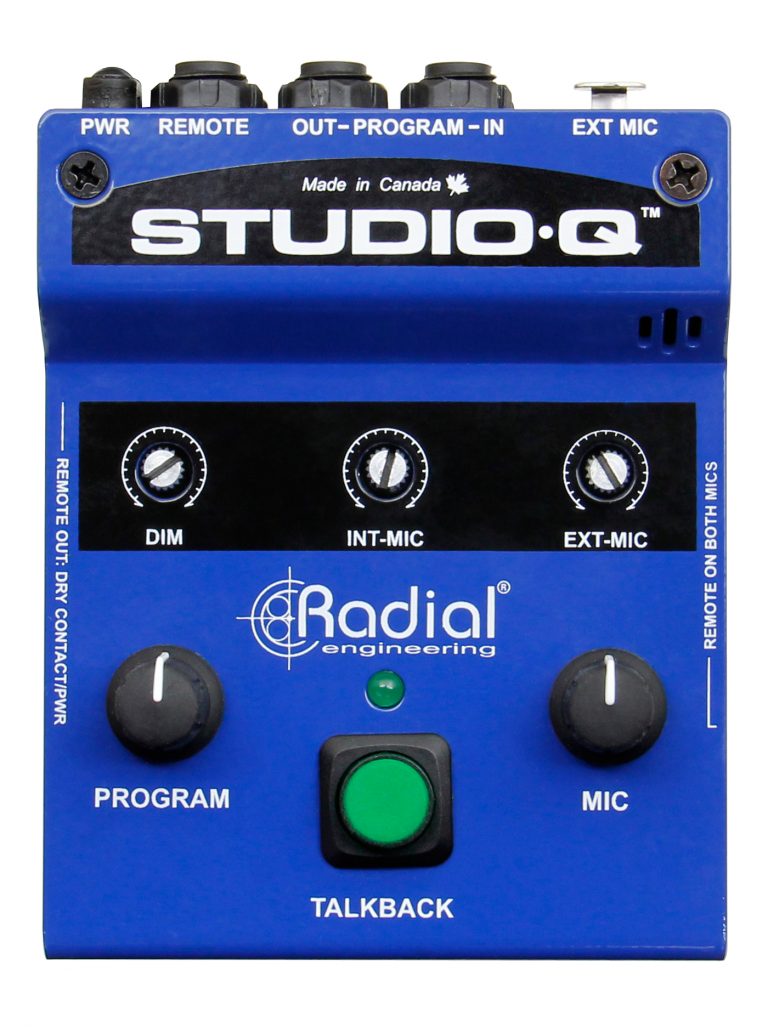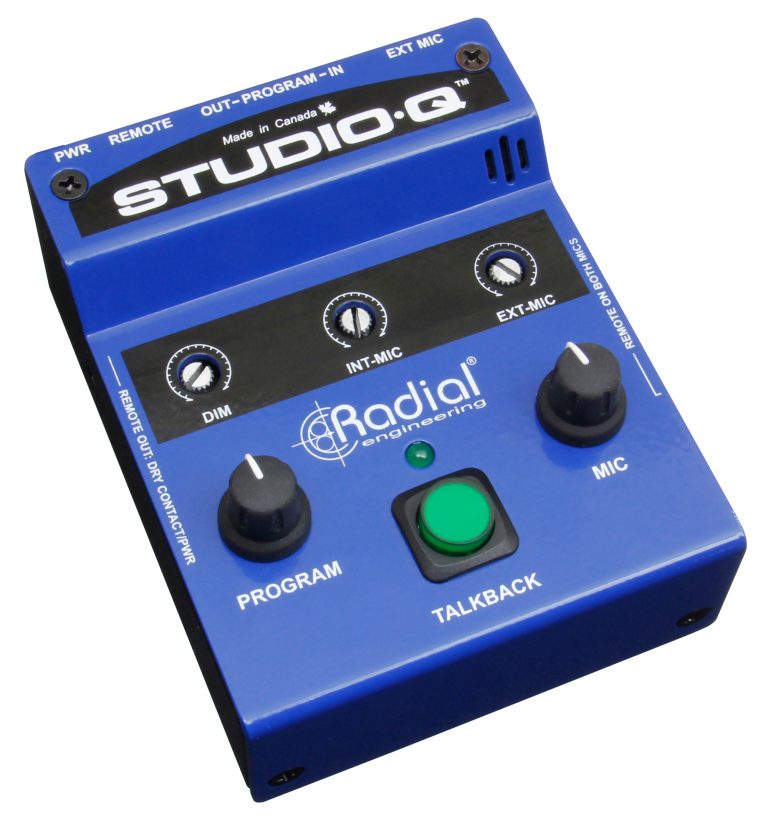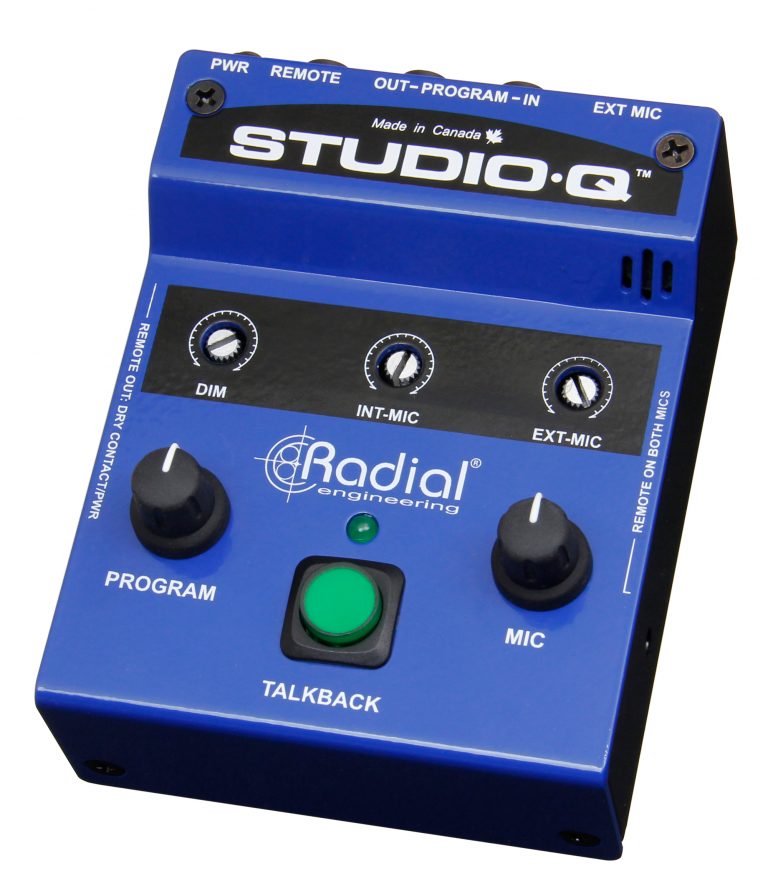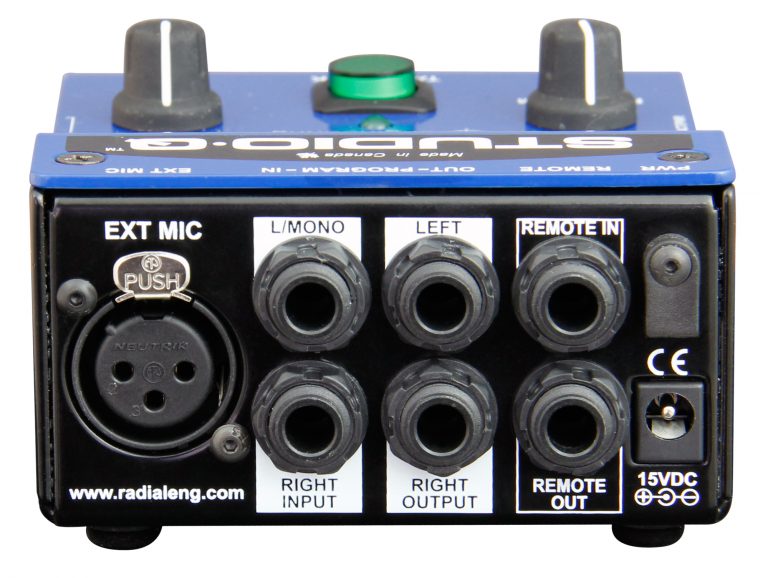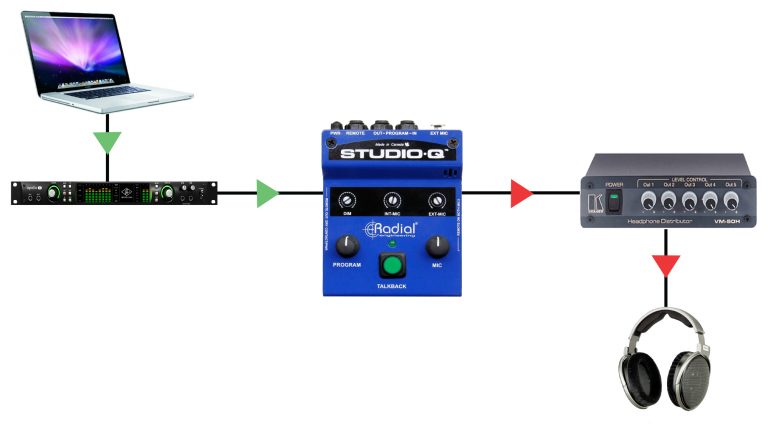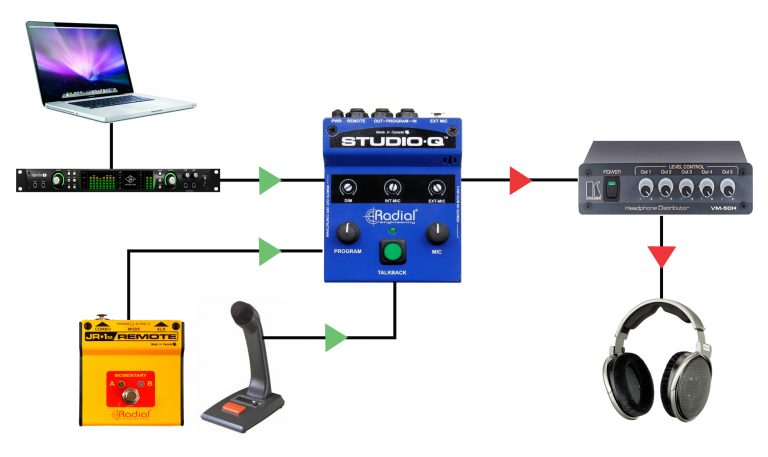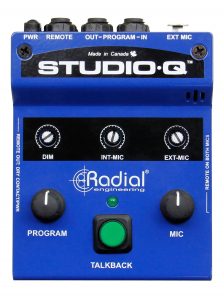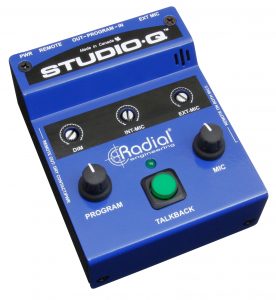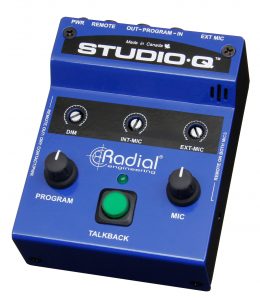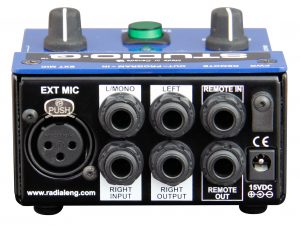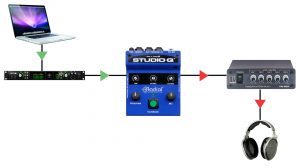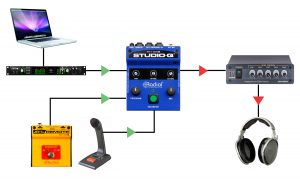If you don't see the question you had in mind here, feel free to enter in the form provided along with your email address so we may send the reply directly to you. Thanks for your participation!
Will the Studio-Q power headphones?
No. You need a headphone amplifier.
Is the Studio-Q equipped with 48V phantom power for a condenser microphone?
No. The producer mic input on the Studio-Q is designed for dynamic mics.
Can I feed a set of headphones directly off the Studio-Q?
No. The Studio-Q manages the signal for a headphone amplifier. It does not have a headphone amp inside.
Can I use the Studio-Q to send talkback to two separate cue mixes at once?
The Studio-Q can be used with two separate cue mixes provided they are both in mono. Simply connect one cue mix to the left input and output of the Studio-Q, and a second mix to the right input and output.
Will the signal path affect my sound?
The Studio-Q uses high quality components and is designed to pass the program audio through as little circuitry as possible, leaving your sound virtually unaffected in the headphones.
When I push the talkback switch, I hear a bit of noise. Is this normal?
The mechanical action of the switch and close proximity of the built-in microphone will result in a bit of noise. This is normal.
Can I use any guitar-type remote control with the Studio-Q?
Yes. A simple ¼” jack is all that is needed and a contact closure. If your pedal works backwards (i.e. mic on all the time), you may need to rewire your footswitch.
Can I use an external microphone only and turn off the internal Studio-Q talkback?
Yes, simply turn down the ‘INT-MIC’ level control to only hear the output of the external microphone.
When I depress a footswitch that is connected to the Studio-Q, it doesn’t switch on the internal mic. Is this normal?
For a footswitch to activate the internal mic, you need to engage a recessed switch on the right side of the Studio-Q labelled ‘Remote on both mics’. This will allow a footswitch to control both the internal and the external microphones. When this switch is not engaged, the footswitch only turns on the external mic.
When I depress the talkback switch, it mutes the audio playback to the headphones. Is this normal?
If you have the DIM control turned fully counter-clockwise, it will mute the music playback to the headphones when the talkback button is pressed, so the only thing the artist will hear is your voice. Simply turn up the DIM control to allow for more playback volume when the talkback button is pressed.
When I use an external microphone at the same time as the internal microphone, one is much louder than the other. How can I fix this?
Use the INT-MIC and EXT-MIC level controls to balance the two signals. Start by setting the quieter of the two mic’s to a useable level, and then turn down the louder of the two to match.
Can I use a latching switch with the Studio-Q?
Yes, a latching footswitch such as the JR1-L can be connected to the Studio-Q remote input: This will keep the talkback microphone(s) active until the footswitch is pressed a second time to deactivate it. However, the talkback button on the Studio-Q itself will always be a momentary switch. Ensure the JR1-L is set to passive mode when using it for this application.

